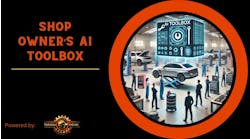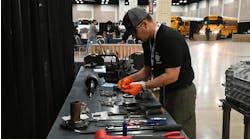While having a ‘strong culture’ can feel like meaningless buzzwords in today’s commercial repair shops, their true meaning is much simpler and more impactful, according to Beverly Beuermann-King, workplace culture and resiliency speaker and expert at Work Smart Live Smart.
“When we talk about the culture that we’re trying to create, generally, whether we use the words or not, it’s about respect,” Beuermann-King explained. “It’s about productivity. It’s about allowing people to bring the best of themselves to the workplace.”
Regardless of what you call a positive workplace, this culture and respect can quickly degrade due to the poor behavior of one person, making it harder for your other employees to stay healthy, engaged, and productive in the shop or fleet. Whether this behavior presents in passive-aggressive comments or withholding needed information, even by accident, the best way to deal with it is with direct communication, Beuermann-King said. But how do you prepare for such a loaded conversation?
First, it helps to understand the motivation behind the toxic behavior or at least have an idea of where it might be coming from.
Read more: Shop culture’s impact on hiring and retention
“What do people get from being negative, difficult, gossiping, or toxic?” Beuermann-King asked.
While a shop manager might not be able to help with external factors causing this behavior, such as difficulties at home or a stressful move, they can help meet these needs in a more appropriate way in the shop.
But to reach that point, managers need to successfully navigate an open discussion with the employee in question. To start, be prepared to address the employee’s positive behaviors as well as their negative ones so that you’re offering balanced feedback, Beuermann-King said. Managers also need to anticipate how the person they’re speaking with may respond to being called out. Planning ahead for bluster, blaming, or even an attempt to leave the discussion allows the manager to be able to redirect this response back to the conversation at hand, and focus on solutions instead of deflection.
Then, if the employee seems willing to work with leadership, be ready to outline future expectations for the employee and what you can do to support them. Don’t forget to establish follow-ups with this person, too, to make sure the behavioral change is holding, and there are no additional issues.
“The problem is we know that sustaining performance is about checking in,” Beuermann-King emphasized. “It’s about holding people accountable.”




